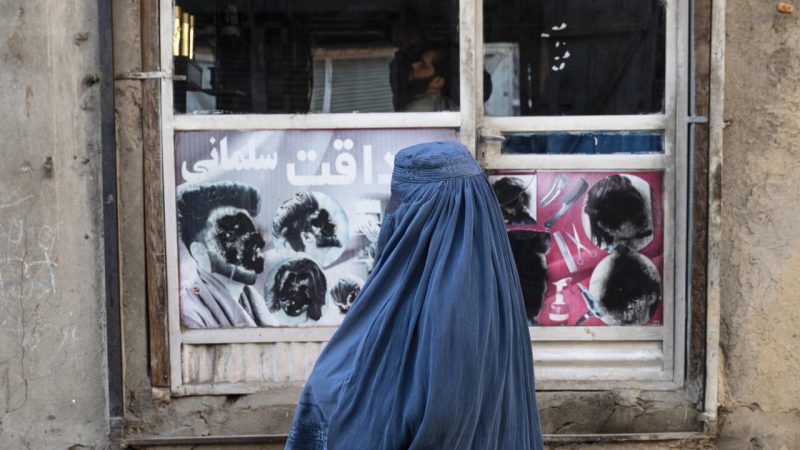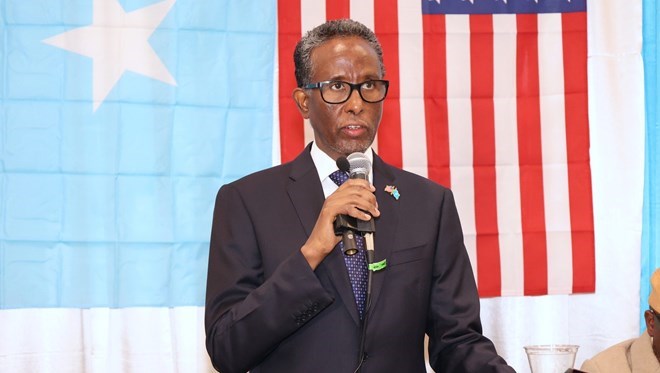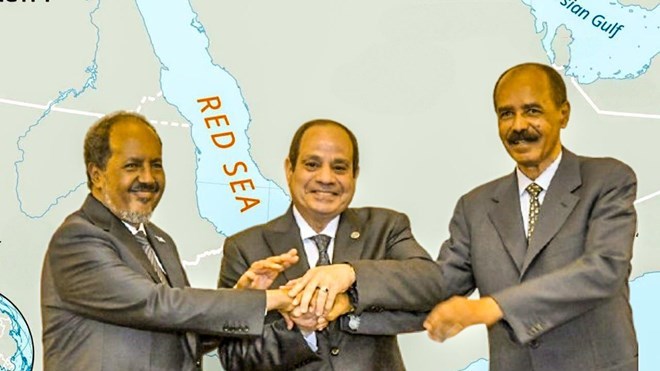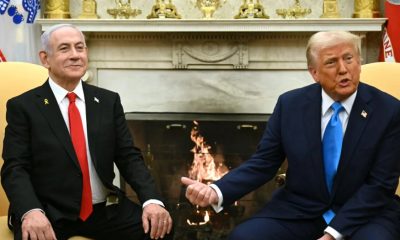Analysis
Taliban Bans Windows Overlooking Areas Used by Women

Afghanistan’s Taliban leader enforces stricter gender segregation, barring windows that offer views of spaces used by women.
In yet another restrictive measure aimed at reshaping Afghan society under its ultra-conservative interpretation of Islamic law, the Taliban’s supreme leader has issued a decree banning windows in residential buildings that overlook spaces “usually used by women.” The order also mandates blocking existing windows with views into courtyards, kitchens, and wells—places associated with traditional female activities in Afghan households.
This directive reflects the Taliban’s ongoing effort to enforce gender segregation and control the visibility and movement of women. It follows a litany of draconian policies since their return to power in 2021, including bans on female education beyond primary school, employment restrictions, and prohibitions on women’s access to public parks and spaces. The new decree pushes these restrictions into the intimate space of private homes, highlighting the extent of state intrusion into daily life.
The rationale provided for the decree cites the prevention of “obscene acts,” suggesting that men observing women in domestic settings might lead to moral impropriety. This perspective underscores the Taliban’s broader view of women as sources of potential transgression rather than individuals with agency and rights.
The Taliban’s sweeping restrictions have led international human rights organizations and the United Nations to describe their governance as “gender apartheid.” By systematically erasing women from public and now even private visibility, the Taliban has cemented its position as one of the most repressive regimes for women globally.
These measures are not merely cultural or religious edicts but also tools of control. Limiting women’s visibility further isolates them and prevents the assertion of independence or resistance to the regime’s policies. Moreover, the policy places an economic burden on households, as families must now alter existing homes to comply with the decree.
The new restrictions also resonate deeply with the broader implications of the Taliban’s rule. Women in Afghanistan have faced a systematic rollback of freedoms, including a ban on public singing and even speaking on airwaves in some regions. By “veiling” not just women’s bodies but also their voices and visibility, the Taliban is enforcing a regime of absolute silence and invisibility for half the population.
Critics argue that such policies do more than violate human rights—they fracture the social fabric, marginalizing women from contributing to society and the economy. Afghan women have historically played vital roles in education, healthcare, and family sustenance, roles now systematically undermined by the Taliban’s decrees.
This latest decree is emblematic of a governing philosophy that prioritizes control over progress, reinforcing the Taliban’s grip on society by cloaking it in religious justification. As Afghan women continue to bear the brunt of these regressive policies, international observers and advocacy groups face mounting challenges in providing support and pushing back against the institutionalized suppression of women in Afghanistan.
The policy is a stark reminder of the urgent need for global advocacy and intervention to protect the fundamental rights of Afghan women, who remain under siege in their own homes and communities.
Analysis
America Pulls the Plug on Somalia: UN Funding Blocked, AUSSOM on the Brink

Trump eyes embassy closures as US rejects UN plan to fund peacekeepers in Somalia — Mogadishu’s last lifeline in peril.

The US shocks the UN by rejecting funding for African Union forces in Somalia, just as Trump weighs closing the US Embassy in Mogadishu. With Al-Shabaab advancing and oil politics heating up, is Somalia doomed to implode?
The United States just signaled the collapse of Somalia’s last fragile security architecture — and it did so with chilling clarity. Washington has publicly rejected UN efforts to fund the African Union Stabilization Support Mission in Somalia (AUSSOM), effectively gutting any hope for predictable peacekeeping operations in a country teetering on the edge of collapse.

This isn’t just a bureaucratic snub — it’s a geopolitical death sentence for Somalia. Al-Shabaab militants are already testing the vacuum, launching a multi-pronged assault on Adan Yabaal, a key military base in Middle Shabelle. If confirmed, the town’s fall would mark the largest strategic loss since Somalia launched its offensive against terror in 2022.
UN Secretary-General António Guterres warned the Security Council: no funding, no peace. But the US—under Trump’s second-term posture—is slamming the door shut, labeling Somalia as unfit for a hybrid funding model under Resolution 2719. Diplomats are in a panic. Meanwhile, Trump is reportedly planning to close up to 30 diplomatic missions, with Mogadishu’s embassy topping the list.
Somalia’s response? Desperation disguised as diplomacy. The FGS is now peddling oil blocks in contested territories like Nugaal Valley. In a flashy announcement on X, Somalia’s ambassador to the US declared “Somalia is open for drilling,” targeting American firms with an offer it legally and militarily cannot secure.

Somalia’s Ambassador to the United States, Dahir Hassan Arab
The move comes after Somalia’s recognition of SSC-Khaatumo — a region still engulfed in the political wreckage of its war with Somaliland.
This isn’t about development. It’s about weaponizing recognition, resource manipulation, and fake sovereignty in a bid to win Trump’s favor and undermine Somaliland’s momentum.
But while Hargeisa builds forests and attracts foreign media praise, Mogadishu is drowning in debt, insurgency, and denial. The West is tuning out, and even the UN is losing patience. The US, once Somalia’s diplomatic oxygen, is now pulling the plug.
Somalia is not rising — it’s being unplugged.
Analysis
Somalia’s Egypt-Eritrea alliance is no anti-terror pact — it’s a Nile-fueled power play against Ethiopia

Proxy Firestorm in the Horn.

New Georgetown report warns: the Horn of Africa is on the brink of a regional war.
Somalia’s Gamble in the Horn.
As Ethiopia flirts with Somaliland recognition, Somalia deepens ties with Egypt and Eritrea—fueling a proxy showdown in the Horn of Africa. A new Georgetown report warns of a geopolitical powder keg.
TACTICS OR TROJAN HORSES? SOMALIA’S NEW ALLIANCES COULD IGNITE THE HORN
Somalia isn’t just shifting alliances — it’s detonating new frontlines. A new report from the Georgetown Journal of International Affairs tears the veil off Mogadishu’s widening web of military deals and exposes a regional arms race that’s dragging Egypt, Ethiopia, Turkey, and Eritrea into what could become Africa’s next great conflict.
The flashpoint? Somaliland. The January 2024 port access deal between Somaliland and Ethiopia, in which Ethiopia would gain maritime rights in exchange for recognition, has shattered old assumptions. Furious, Somalia raced into the arms of Egypt and Eritrea — two states that already view Ethiopia as a regional nemesis. Egypt’s military cargo to Somalia in early 2025 wasn’t about fighting Al-Shabab — it was about squeezing Ethiopia over the Nile.
The report warns: peacekeeping missions like AUSSOM are no longer neutral. They’re being manipulated by rival states to project hard power under soft banners. With Ethiopia’s troops still embedded in Somalia’s stabilization efforts, the stage is set for internal sabotage masquerading as peace.
Mogadishu’s sudden outreach to Azerbaijan and Turkey further muddies the waters. The UAE, Russia, and China are already entrenched through ports and military outposts, turning Somalia into the ultimate battlefield for global influence.
Forget diplomacy — this is geopolitical brinkmanship at its rawest. The Horn of Africa is becoming a chessboard of oil, access, and arms, and Somalia just moved its queen into check.
WARYATV.COM | FRONTLINE ANALYSIS
Analysis
How Iran, China, and Russia Are Building a Shadow Empire to Cripple the West

The 2025 U.S. threat report reveals a chilling escalation—America’s enemies are no longer acting alone. Welcome to a world where Iran trains proxy killers, China hacks satellites, and Russia prepares nukes in orbit.
WARYATV Exclusive Analysis
What happens when four of America’s most dangerous enemies start coordinating? According to the U.S. Intelligence Community’s 2025 Threat Assessment, we’re already in that nightmare—and the world’s balance of power is tilting fast. Iran, Russia, China, and North Korea are no longer just isolated threats; they’re actively aligning to undermine the West on every front—military, cyber, economic, and even orbital warfare.
Iran is arming to the teeth and rallying its regional proxies—the Houthis, Hezbollah, and al-Shabaab—with precision-guided drones and ballistic missiles aimed squarely at Israel and U.S. forces. Despite its internal crises, Tehran is playing the long game. It’s forging deeper alliances with Russia and China, supplying drones to Moscow and quietly embedding networks inside the U.S. itself, targeting former and current officials.
Meanwhile, Russia has fully shifted to wartime footing. Despite 750,000 casualties in Ukraine, Putin is more defiant than ever. Moscow is stockpiling weapons, deploying nuclear subs near American shores, and now developing a space-based nuclear satellite—a potential Pearl Harbor in orbit. The Kremlin is also flooding the globe with anti-American propaganda using AI-generated influencers and fake news bots.
Then there’s China—the ringleader of digital authoritarianism. It’s no longer just about Taiwan. Beijing is stockpiling critical minerals, buying ports from Greenland to the Horn of Africa, and arming its AI-driven army with satellite killers. China’s Volt Typhoon and Salt Typhoon cyber ops have already penetrated U.S. infrastructure. Next up? LLM-powered disinformation to flood American minds with doubt and division before the 2026 elections.
North Korea? It’s no longer the clownish rogue state. It’s sending troops to help Russia in Ukraine and funneling war profits into its expanding nuclear arsenal. The DPRK now flies hypersonic missiles capable of evading U.S. defenses. Kim Jong Un is no longer begging for attention—he’s trading nukes for influence.
The scary part? These four regimes are increasingly acting as one strategic axis. The U.S. report makes it clear: if war breaks out with one, the others may follow.
Welcome to the new world disorder.

Analysis
South Korea: Ties Established with Syria Amid Shift in Middle East Alliances

Seoul forms ties with Damascus—once North Korea’s close ally—signaling deeper fractures in Kim Jong Un’s global circle.
From Cold War enemy lines to unexpected diplomacy, South Korea has pulled off a quiet but powerful geopolitical win: establishing full diplomatic ties with Syria, a state long entrenched in North Korea’s orbit.
This isn’t just a photo-op. It’s the final piece of Seoul’s 191-state UN diplomatic puzzle—and a direct message to Pyongyang. The deal, signed in Damascus by South Korean Foreign Minister Cho Tae-yul and his Syrian counterpart Asaad al-Shibani, opens the gates for economic collaboration, reconstruction assistance, and developmental aid to a battered but rebuilding Syria.
But the deeper story? Syria’s new transitional government is recalibrating. Under President Ahmed al-Sharaa, Damascus is charting a path away from militant reliance and Iranian dependence. Former HTS affiliates and technocrats now sit together in a reform-minded cabinet that’s prioritizing civil unity, dismantling militias, and inviting investment—from Seoul, not Tehran.
Meanwhile, North Korea is silent. Since Assad’s fall, Kim Jong Un’s state media has hardly mentioned Syria—except for one vague nod to “the Middle East crisis.” And while North Korea once flooded Syria with arms and advisers, it now watches as South Korea lands in the heart of its former ally’s reconstruction blueprint.
Strategically, this could be a diplomatic domino: Syria joined Turkey’s Anatolia Forum, hinting at a new regional outreach effort, even as the country remains divided—with Turkish forces, US-backed SDF, and former militias still active.
Seoul’s next move? Offering its post-war economic miracle model as a blueprint for Syria’s rebirth—and inserting itself into Middle Eastern politics like never before.
Pyongyang has lost a foothold. Washington is watching. Beijing is calculating. And Syria? It may have just opened its gates to a brand new alliance map.
Analysis
Trump’s Iran Deal: Will Israel Pay the Price for Loyalty?

As nuclear talks resume, Israeli defense officials fear Trump’s quest for a symbolic win could come at the cost of national security.

Trump’s unpredictable stance on Iran’s nuclear program is raising alarm in Israel, where top defense figures fear a deal may tie their hands and risk national security.
Israel’s generals are biting their tongues — but not their worries. Behind closed doors in Tel Aviv and within the Mossad’s fortified halls, a rising fear is taking hold: that Donald Trump, the self-declared “best president Israel’s ever had,” might cut a flashy but hollow deal with Iran that leaves the Jewish state more exposed than ever before.
There’s no question Trump has been a close friend to Israel — moving the embassy to Jerusalem, recognizing the Golan Heights, and greenlighting regional realignments. But even friendships have limits, and this one is now being tested on the most existential front of all: Iran’s nuclear program.
Trump’s history of dramatic diplomacy — from North Korea’s empty stage shows to flirtations with Putin — has Israeli strategists fearing the return of the JCPOA nightmare under a different name. Despite Defense Secretary Pete Hegseth’s saber-rattling and a beefed-up US military presence near Iran, the concern is that Trump will trade meaningful nuclear rollbacks for symbolic gains to score a quick political win. Close a facility? Iran can build another. Destroy some old centrifuges? Tehran has next-gen tech ready to roll.
And while Trump may boast of cutting a deal “better than Obama’s,” Israeli intelligence knows the truth can be buried beneath tons of uranium — or moved silently underground.
Netanyahu’s dance with Trump hasn’t reassured anyone either. The Israeli PM left his own security cabinet in the dark after meeting with Trump, raising eyebrows by sidelining dissenting voices. Worse, there’s been no hint from Washington of a hardline “Libya model” disarmament — just whispers of concessions.
The result? A growing chorus within the IDF and Mossad saying, if Trump seals this deal, Israel may lose its last, best window to strike Iran’s program before it’s buried too deep to touch.

Trump may be Israel’s most bombastic friend. But in the realm of nuclear diplomacy, Israel needs precision, not pageantry. A weak deal now could leave Jerusalem isolated, handcuffed, and with no choice but to act alone — or too late.
Analysis
Merz’s Coalition: Germany’s Answer to Trump’s Trade Blitz and Putin’s War Machine

Under pressure from Trump’s tariffs and Putin’s aggression, Germany’s new chancellor builds a rapid-fire coalition to reassert European leadership and restore stability.
Friedrich Merz seals a high-stakes coalition to counter Trump’s economic shockwaves and Putin’s war threats. Germany is back—with debt-fueled defense, tougher borders, and a warning to Washington.
Germany blinked, then moved fast. With Donald Trump hurling 20% tariffs at the EU and Vladimir Putin digging deeper into Ukraine, Friedrich Merz did what German leaders rarely do—he moved with speed. Just 45 days after his snap election win, Merz sealed a powerful coalition deal with the center-left SPD, not out of political convenience, but out of strategic necessity.
This isn’t just domestic politics—it’s about survival. Trump’s trade war is blowing a hole through Germany’s industrial heartland. Putin, undeterred and emboldened, watches Europe flounder. And the United States, once a security guarantor, now looks more like a wildcard. For Berlin, the old transatlantic order is dead—and Merz knows it.
His coalition, fast-tracked under extraordinary pressure, promises billions in military and infrastructure spending, not out of generosity but to plug the vacuum left by America’s retreat. But Merz’s problem is internal too: while EU leaders cheer the deal, back home his own base sees betrayal—fueled by AfD populists calling him weak on borders and sold out to the left.
That’s why Merz pivoted hard on migration: slamming shut asylum routes, promising deportation surges, and pushing “safe country” designations. It’s a political firewall against the far-right, but also a gamble that could fracture Germany’s social fabric.
Still, Merz had no choice. Trump’s tariffs and unpredictable diplomacy have shattered Europe’s illusions. The era of Germany hiding behind NATO is over. If Berlin wants influence, it has to pay—and fight—for it.
Merz’s message to Trump was simple: Germany is back. But the real message, loud and clear, was to Europe: the gloves are off, and Berlin is done waiting for America.
Analysis
China Strikes Back: Trump’s Trade War Just Triggered a New Cold Front

Beijing fires back at Trump’s 50% tariff with crushing 84% duties, bans on top U.S. defense firms, and a bold message to Washington: Enough is enough.
The trade gloves are off. China has just escalated its standoff with the United States into a full-blown economic cold war. Less than 48 hours after President Donald Trump unleashed a crushing 50% tariff on all Chinese imports, Beijing retaliated with ferocity: 84% total tariffs on U.S. goods and sweeping sanctions on 18 American defense contractors.
This isn’t tit-for-tat. It’s a calculated declaration that China is ready to match Trump’s aggression dollar for dollar — and missile for missile. The 18 companies, including military AI developer Shield AI and elite U.S. Air Force partner Sierra Nevada Corporation, are now blacklisted under Beijing’s “unreliable entities” framework. Translation? They’re locked out of China — no investments, no exports, no excuses.
The timing is as political as it is economic. These firms weren’t just targeted for trade; they were hit for arms deals with Taiwan, the democratic island Beijing vows to reclaim. The message from Xi Jinping’s government couldn’t be clearer: Play with fire in Taiwan, and your defense contractors burn.
So what’s the real fallout? While most of these companies don’t rely heavily on Chinese markets, Beijing knows how to exploit soft points in global supply chains. Just ask U.S. drone maker Skydio, which lost its Chinese battery source overnight after past sanctions. This move isn’t about business — it’s about leverage.
And still, amid this economic artillery exchange, China sends a chilling whisper to global investors: “Don’t worry — this won’t affect the honest ones.” But who defines honesty when geopolitical fault lines crack deeper every day?
Trump wanted a trade war. What he got was China’s economic kill switch flipped — not just in tariffs, but in strategic deterrence.
Because this isn’t just trade. It’s a battlefield — and the weapons are sanctions, supply chains, and national pride.
Analysis
Can Al-Sharaa’s Government Turn War-Torn Ruins into a Unified Nation?

Syria’s post-Assad leadership under Ahmed al-Sharaa outlines reconstruction, unity, and disarmament as priorities—but faces daunting internal and geopolitical obstacles.
After 15 years of civil war, Syria’s future hinges on one question: can the transitional government under President Ahmed al-Sharaa transform devastation into durable unity—or is this just the calm before another storm?
In their first official meeting on April 7, Sharaa’s government laid out an ambitious plan that reads like a blueprint for national resurrection. Reconstruction, integration of fractured regions, economic revitalization, and disarmament are the pillars. Yet behind every promise is a political landmine.
Sharaa himself—once the commander of the Islamist faction Hayat Tahrir al-Sham—now helms a government with surprising diversity: ministers representing Christians, Druze, Kurds, and even Alawites. This cosmetic inclusivity is designed to telegraph a message: this is not Assad’s Syria. But it may not be enough to convince a war-weary population still recovering from displacement, famine, and chemical attacks.
The biggest challenge? Territorial fragmentation. Turkey still controls chunks of northern Syria. The US-backed Syrian Democratic Forces (SDF) run the east. The recent deal between Sharaa and SDF commander Mazloum Abdi hints at a future merger—but it’s a fragile hope, not a certainty. And Iran, never far from Syria’s power grid, continues to loom in the background, quietly assessing how this transitional order threatens its regional interests.
Reconstruction sounds noble, but in practice it’s a logistical and financial nightmare. Entire cities must be rebuilt from scratch. Refugees are returning, only to find homes razed and services non-existent. The plan to reintegrate militias and dissolve non-state armed groups is bold—but could easily spiral into another power struggle.
Sharaa’s government also faces the delicate balancing act of civil peace and media control. Calls for “inclusive, national discourse” are loaded in a post-dictatorship context. Who decides what is inclusive? And can Syria build unity without honest reconciliation or transitional justice?
There is promise in Sharaa’s roadmap—but it’s crawling with risks. Without serious international backing and internal discipline, the new Syrian state could collapse under the same fault lines that doomed its predecessor.
The next 12 months will determine whether this new government is a bridge to peace—or just another fragile experiment in a country that’s seen too many false dawns.
-

 Analysis1 month ago
Analysis1 month agoSaudi Arabia’s Billion-Dollar Bid for Eritrea’s Assab Port
-

 ASSESSMENTS2 weeks ago
ASSESSMENTS2 weeks agoOperation Geel Exposes the Truth: International Community’s Reluctance to Embrace Somaliland as a Strategic Ally
-

 Somaliland3 months ago
Somaliland3 months agoSomaliland and UAE Elevate Ties to Comprehensive Strategic Partnership
-

 Africa1 year ago
Africa1 year agoHow Somaliland Could Lead the Global Camel Milk Industry
-

 Analysis1 year ago
Analysis1 year agoIran escalates conflict, attacking Israel; US forces help Israel to intercept Iranian projectiles
-

 Top stories11 months ago
Top stories11 months agoGunmen Kill 11 in Southeastern Nigeria Attack, Army Reports
-

 Analysis12 months ago
Analysis12 months agoIsrael and Iran on Edge: Tensions Escalate Amidst Rising Threats
-

 TECH11 months ago
TECH11 months agoZimbabwe Approves Licensing of Musk’s Starlink Internet Service





























